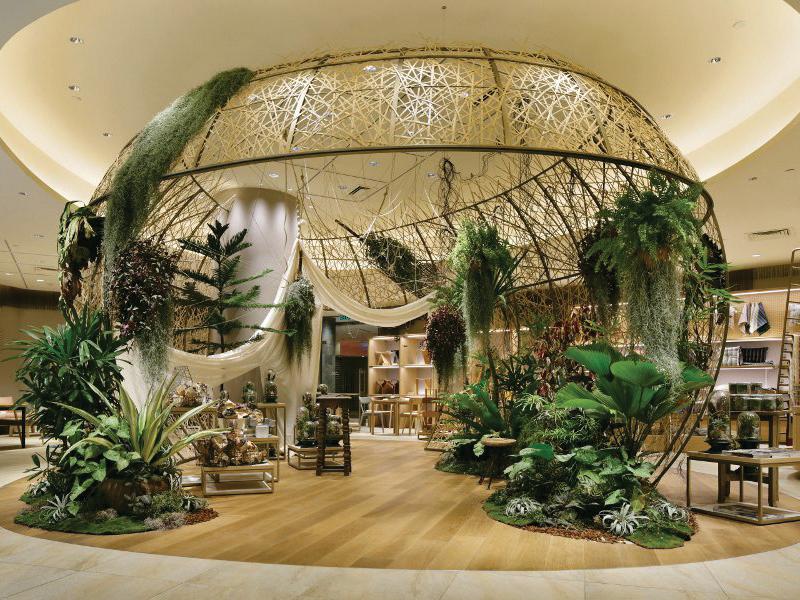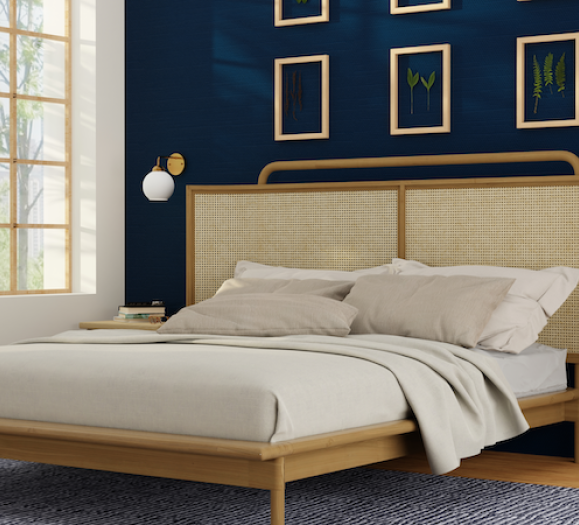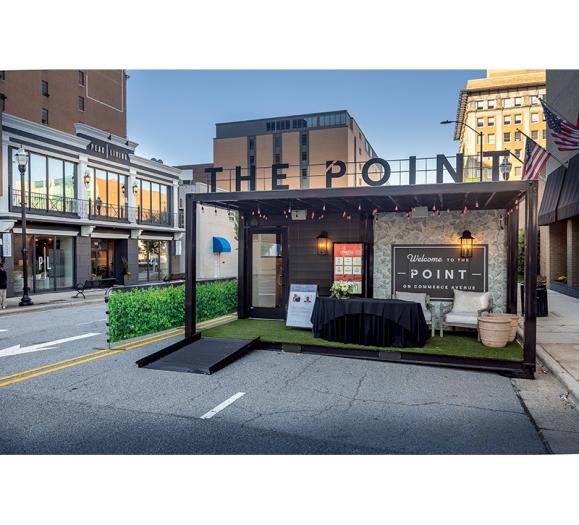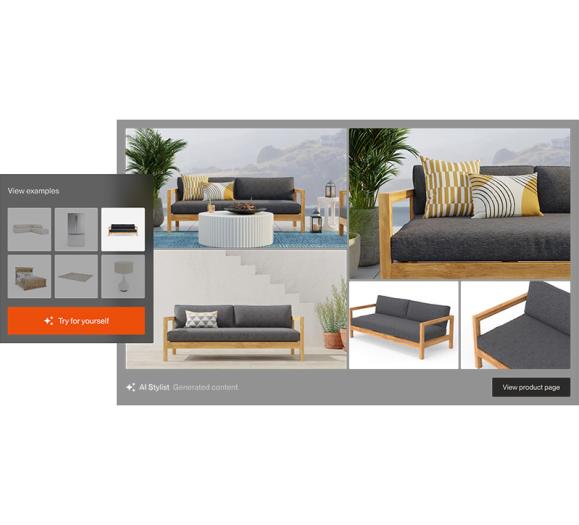If Covid has taught us anything, it’s how important our homes are to our overall well-being. As designers, how do you assess and define the attributes that are most important to your clients to ensure they have the beauty and functionality that defines a healthful environment? And in today’s environment, what constitutes wellness for most consumers?
An overarching trend we’re seeing in residential design has been a connection back to nature — organic shapes, natural materials, greenery and more. For homeowners, according to a recent Houzz survey, one of the top three spaces on the renovation list has been outdoor spaces as we continue to embrace nature, whether consciously or subconsciously.
Biophilia — the innate human instinct to connect with nature and other living beings — isn’t a new concept, yet it does seem to have a renewed focus following this period where the safest place to be has been at home.
The study of biophilia as a health factor originated in the early 1980s, says Mike Peterson, founder of Visionary Design Marketing and Design Harmony. Part of Peterson’s expertise focuses on the science behind how we interact with our environments and the technologies designed to assess our instinctive reactions to different environmental stimuli. He continues that back in the ‘80s, doctors and nurses noticed that some hospital patients were recovering faster than others. It turned out that some of the patients had a room that faced a brick wall and others had a view of a treed landscape.
Can you guess which group recovered one day faster? If you guessed the landscape you’d be correct. “We now know that our pain receptors are linked to our pleasure seeking receptors so the view of nature offset the pain receptors,” Peterson notes. Connection to nature accelerated healing in this hospital.
Defining Wellness in Today’s Home
This connection to natural elements can affect how we feel in our homes as well, hence the resurgence of biophilic design as we have taken refuge and focused on our collective health.
For Lisa Kahn, founder of Lisa Kahn Designs in Florida, there has never been a time where we have needed sanctuary more, spaces designed to intentionally create peace in the environment around us. “People have become much more open to this now,” she says. “People need to heal at home. We understand how to create true healing in healthcare environments; how do we infuse those healing elements at home?”
According to Kahn, it requires creating a sensory experience in these spaces, appealing to each of the senses, and making deliberate decisions on how you live in a space. “The elements you use to create sanctuary are extremely personal,” she says, adding that a connection to nature is very much a part of that equation. For example, she continues, her clients respond to spaces that are painted in greens, blues, blue grays. We also need to be able to see the outdoors or photos of natural elements, she adds. Embracing all of the senses in these spaces goes beyond a visual connection to the natural elements. Sounds, scents and tactile elements also need to be incorporated for that sanctuary-style environment. As such, we’ve seen an increase in soft, natural fabrics, and elements — such as a combination of old and new — that help people feel connected to their homes. Khan adds, “We need to view our spaces with the true import they have. How can we best have spaces that nourish us?”
Lori Miller, Founder and Lead Designer at LGC Interiors in Long Island, NY, has also seen a shift toward a more natural focus in the design projects she’s taken on recently. “I’ve been asked to participate more in landscape and outdoor design, and people are asking for indoor plants as well,” she says, something she hadn’t experienced previously.
There is also a focus on durability and how furnishings and spaces function. “It used to be about aesthetics and now there’s more of a focus on functionality,” she says, noting that clients are asking for durable textiles, modular seating, and resilient finishes on much-used surfaces, such as dining tables. In addition, she’s seeing requests for walls where open concept had been the norm before. “People are looking for private space and some separation,” she says, a concept that speaks to Kahn’s focus on sanctuary — spaces that can be focused to individual styles.
These design leanings are backed by trend experts, who have touted a surge in natural elements, organic shapes and the soothing colors that create the connection of indoor-outdoor living. In a recent trends seminar at Dallas Market Center, Global Trend Ambassador Patti Carpenter touted “Nature” as a continued growth trend this year. “Rooted in the nourishing warmth of nature, we seek to bring the outdoors in. The imperfections create a calming retreat that restores the body and the mind,” she says.
According to RentCafe, Japandi — a combination of Japanese and Scandinavian style — topped a recent 2022 interior design trend survey, seeing a Google search uptick of 1,217 percent over last year. Japandi is “focused on creating a calm and clean aesthetic; embracing natural tones and textures; and promoting peace of mind. As such, the color palette is filled with neutrals and muted colors, as well as pops of accent and contrast to create dynamism. At the same time, plants bring in life, and warmer hues and are used to create a livelier, more dynamic version of the classic minimalist,” according to the RentCafe report. Keywords representing Japandi include zen, tranquil and harmonic.
Whatever we call it — Japandi, biophilia or sanctuary — the outcome is the same. Consumers focusing on home design are largely looking for spaces that bring a sense of calm and well-being, and that connection back to nature.
Achieving a Wellness Vibe
Kahn focuses on the overall tranquility of the home but also creates spaces that each individual can dedicate to their own use. “I look at it in two ways,” she says. “Macro sanctuary refers to the entire home, which insulates you in that space. Within that, you need micro sanctuary spaces for each of the inhabitants. We find a space within the home that supports that person’s activity,” she adds, whether that’s a space with a door that closes or a corner of a larger room with elements that nurture that individual.
Peterson suggests that bringing in natural elements we may not even know we’re craving can have a profound impact on our well-being and how we connect with our homes. Prospect and refuge — the ability to look out from a secure space — for example, is hardwired into our reflexive responses. It can be as simple as positioning furniture in a way that the focal point is a window that overlooks the outdoors. He adds that our brains are wired to organized complexity as well, and suggests introducing this in the home through the use of fractals, for example — patterns that seem random but aren’t, such as the branches in a canopy of trees or the lines of a snowflake. This can be achieved in homes via repeating light fixtures or surface designs. “There are so many touchpoints,” Peterson says. This concept is being rolled out in businesses, hospitals and spaces that require the promotion of healing. The rebuilt Sandy Hook, CT, elementary school, for example, uses biophilia and fractals to create an environment designed to heal, he notes.
Making Assessments
While wellness and nature are inherent in the design of many of today’s homes, what resonates with consumers varies from region to region and more importantly, from person to person.
For most designers, getting to know their clients through conversations, intake forms and more assist in the determination of what spells wellness on an individual level. There are also scientific tools becoming more readily available that can pick up cues of where the eye goes and what resonates with consumers.
LGC’s Miller takes an intuitive approach to how her clients are leaning. With a background in clinical psychology, it’s a skill she’s honed. “As we’re initially meeting, going through inspiration photos or shopping, I can assess their facial expressions, how their voices change, how they soften when they get excited about something,” she says. “I can see what they’re responding to and pinpoint the specific details.” Miller doesn’t only rely on her intuition when she’s designing for clients, however. She also starts these relationships with a two-page assessment that determines the members of the household — including pets — how the home functions, what’s in closets, and current favorite items.
Visionary Design Marketing’s Peterson adds a more scientific approach to these assessments. While these tools are here now, he anticipates that products and programs that can measure sensory experiences and determine what people respond to subconsciously will have more mainstream impact in the coming years.
Visual attraction software can predict where the subconscious mind will go first when looking at an image, says Peterson. “Ninety-five percent of our brain’s function is subconscious. We may look at something first before we look at something we consciously connect with.” VAS focuses on gaze sequencing, and it’s something manufacturers and retailers understand and use to create packaging that draws the eye, for example.
Using gaze sequencing and heat mapping, these tools can see where our eyes look first and can help determine focal points. “From a hereditary perspective, we want to look outside from the safe inside [prospect and refuge],” Peterson says. “There’s a 98 percent chance the eye will look outside in the first three seconds.”
Wearable technology is here too, such as a Google wristband that can measure cardio function, heart rate and skin conductivity to assess focal points that excite us and deliver the most positive impact. “These technologies can be used to better design,” Peterson continues. Consider running a CAD drawing through a VAS program to learn where your client’s attention lands before putting a room together, he notes. The software is currently being used heavily in website design to assess if customer’s eyes are going where you want them to go. The software isn’t expensive and there are free trial periods to assess its effectiveness.
Whether focusing on trends or using science to create environments that speak to wellness, understanding how the home environment affects health will continue to be an opportunity for designers — and retailers — in the coming years. “In the design field, we are profoundly affecting people’s lives,” Khan says. “We are transforming lives in ways that people can’t articulate. It gives our profession such an amazing backbone. That’s something we need to be talking about.”







